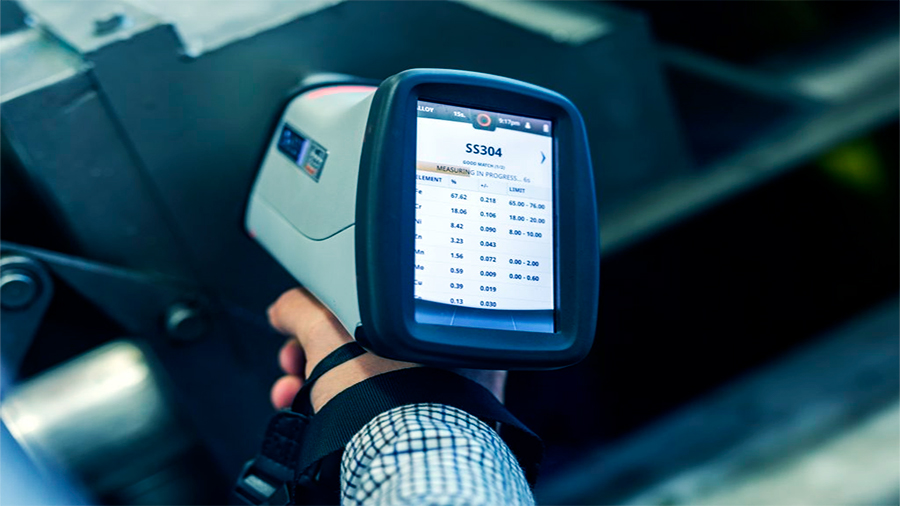How To Avoid Scammers When Buying Metals On Credit
Precious metals attract investors because they carry an image of safety and stability. Gold, silver, platinum, and palladium are often seen as hedges against inflation or currency swings. But their popularity also makes them magnets for fraud. When credit enters the picture, the risks grow even higher. Borrowing to buy metals amplifies both the financial stakes and the opportunities for scammers to exploit trust. Understanding how to check sellers, spot red flags, and verify the reliability of transactions is essential. Staying cautious is not just good practice—it protects both your money and your credit record.
Why Metals Bought On Credit Are Riskier
Paying with borrowed funds changes the dynamic. If you use credit for a purchase and the deal goes wrong, you’re still responsible for repayment. That pressure creates urgency and can cloud judgment. Scammers know this and often push “limited-time offers” that encourage rushed decisions. They exploit the fact that investors borrowing money feel eager to lock in prices quickly. In this environment, fraudsters market fake bars, counterfeit coins, or even non-existent storage accounts. What looks like a simple opportunity can turn into long-term debt tied to a worthless asset. That’s why being extra cautious is non-negotiable when credit is involved.
The Illusion Of Urgency
Scam operations frequently use urgency as leverage. Promises of discounted bullion “only available today” or rare coins “just released” are designed to override your natural caution. Legitimate sellers rarely pressure buyers into instant commitments, especially when credit is involved.

Checking The Seller’s Reputation
The first layer of protection is always the seller’s track record. Reputable metal dealers have established histories, clear contact details, and visible regulatory compliance. Scammers often operate from anonymous websites, temporary addresses, or newly created companies with no verifiable background. Before making a purchase, especially on credit, research the business thoroughly. Look for reviews, industry certifications, and whether the dealer belongs to recognized trade associations. Reliable companies won’t shy away from scrutiny; scammers hope you won’t take the time to check. Taking a few hours to investigate can prevent years of regret tied to fraudulent credit-financed purchases.
How To Research Effectively
Use multiple sources. Don’t rely only on testimonials displayed on the seller’s own site. Cross-check with consumer protection boards, regulatory filings, or independent financial forums. Search for legal actions or unresolved complaints. In the precious metals space, a clean record is as valuable as the product itself.
Recognizing Common Scam Tactics
Fraudsters recycle familiar tricks. Some push overpriced metals disguised as “collectibles,” inflating value with fake certificates. Others promise storage services but never actually hold the metals. A frequent tactic is offering returns far above market averages, luring buyers into schemes that collapse quickly. For credit-based purchases, another risk is manipulation of loan agreements—brokers tying buyers into unfavorable financing terms hidden in small print. Understanding these tactics makes it easier to spot patterns before you fall into the trap.
Warning Signs To Watch For
Red flags include evasive answers about delivery, vague contracts, and pressure to sign financing agreements without full explanation. Any lack of transparency around product origin or storage should be treated as a serious warning. If the seller cannot provide clear, verifiable proof of the asset, the safest move is to walk away.
Verifying The Metal Itself
Even if the dealer looks legitimate, the product must be verified. Counterfeit coins and bars are increasingly sophisticated, often packaged to mimic authentic mint releases. Buyers using credit should demand proper certification and independent authentication. Legitimate dealers provide serial numbers, assay certificates, and transparent sourcing details. When metals are stored in vaults, insist on independent audit reports. Scammers thrive when buyers accept paperwork at face value. Careful verification transforms trust into certainty.
Physical Delivery Versus Paper Promises
Another common issue is sellers offering “paper metals”—contracts claiming ownership of bullion that is never physically delivered. While paper trading exists legitimately in some markets, scammers exploit the concept to sell fake claims. When borrowing money, avoid deals where the metal can’t be independently confirmed in physical form or by a trusted custodian.
Understanding Financing Risks
Credit introduces a second layer of complexity: the financing structure itself. Unscrupulous dealers may steer buyers toward in-house financing with unfavorable rates. Some tie loans directly to inflated asset prices, ensuring the buyer is already underwater before metals are even delivered. Others misrepresent loan conditions, adding hidden fees or balloon payments. Checking the fine print is just as critical as verifying the metals. Scammers know many borrowers focus only on getting the asset, not the loan conditions. This oversight is what traps investors in cycles of debt linked to questionable assets.
Steps To Protect Yourself With Credit
Secure financing independently when possible, through banks or trusted lenders, rather than through the seller. This separation reduces the chance of manipulated contracts. Always compare effective rates, check repayment terms, and confirm whether prepayment is allowed. Borrowing can be a smart strategy in metals investing, but only when credit terms are as legitimate as the assets themselves.
The Role Of Documentation
Documentation is where many scams fall apart under scrutiny. Fraudulent sellers often provide incomplete invoices, generic contracts, or certificates without recognized authority. Buyers on credit must demand full, detailed documentation: clear loan agreements, verified proof of ownership, and certified receipts. If documents look vague or inconsistent, that is often the first sign of fraud. Well-structured contracts protect buyers, while sloppy paperwork benefits only scammers. Insist on clarity before releasing funds or signing credit agreements.
Keeping Personal Records
Maintaining your own file of receipts, contracts, and communication is vital. Should disputes arise, detailed records strengthen your position with lenders, consumer protection agencies, or courts. Many victims of scams fail to keep paperwork, leaving them exposed when fraudulent dealers disappear.
Consumer Habits That Reduce Risk
Beyond technical checks, everyday habits make a difference. Avoid rushing into deals. Treat unsolicited credit-linked offers with skepticism. Be cautious of promotions arriving by phone or email, especially from unknown sellers. Develop a practice of comparing multiple offers rather than committing to the first that looks attractive. Diversify sources and avoid concentrating too much debt in one risky purchase. These habits create resilience, making it harder for scammers to exploit impulsive decisions.
Trusting But Verifying
Legitimate dealers expect questions. If a seller discourages scrutiny or avoids detail, treat it as a sign to step back. Trust should be earned through transparency, not assumed through marketing promises.

When Things Go Wrong
Even with preparation, scams sometimes succeed. Borrowers caught in fraud still face credit obligations. This creates double pressure—repaying debt for assets they may never receive. When this happens, quick action is essential. Contact lenders immediately, document the situation, and seek legal advice. Consumer protection agencies may help, but timing is critical. The faster you respond, the greater the chance of limiting financial damage. This is why prevention remains the best defense—avoiding scams entirely is far less painful than trying to untangle fraud after it happens.
Learning From Mistakes
Those who have been scammed often become the most careful investors afterward. Their experiences show that vigilance is not paranoia—it’s common sense in a market where fraud thrives. Every missed warning becomes a lesson for the future.
The Conclusion
Buying precious metals on credit can be a sound financial move when done responsibly, but it also creates fertile ground for scammers. Oversaturation of offers, urgency tactics, counterfeit products, and manipulated loan terms all serve as traps for unwary buyers. Protecting yourself requires checking seller reputations, verifying products, scrutinizing financing, and insisting on proper documentation. Credit adds opportunity, but it also amplifies risks. With awareness and discipline, investors can enjoy the benefits of metals while avoiding the costly mistakes that scammers hope you will make. In a market built on trust, caution is your best asset.












